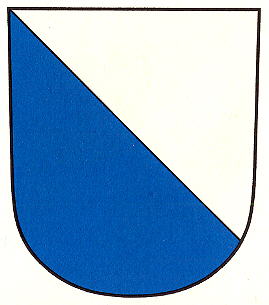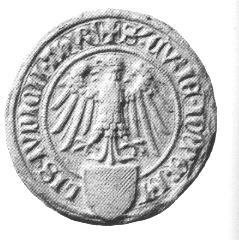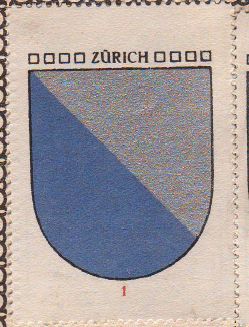Zürich: Difference between revisions
Knorrepoes (talk | contribs) No edit summary |
Knorrepoes (talk | contribs) m (Text replace - "[[Literature" to "{{media}} [[Literature") |
||
| Line 33: | Line 33: | ||
|align="center"|[[File:zurich5.hagch.jpg|center]] <br/> | |align="center"|[[File:zurich5.hagch.jpg|center]] <br/> | ||
|} | |} | ||
{{media}} | |||
[[Literature]] : Ziegler, 1977 | [[Literature]] : Ziegler, 1977 | ||
Revision as of 09:42, 9 July 2014
| Heraldry of the World Civic heraldry of Switzerland - Schweizer Wappen / Armorial de Suisse |
ZÜRICH
Canton : Zürich
Additions : 1893 Aussersihl, Enge, Fluntern, Friesenberg, Hirslanden, Hottingen, Industriequartier, Leimbach, Oberstrass, Riesbach, Schwamendingen, Triemli, Unterstrass, Wiedikon, Wipkingen, Witikon, Wollishofen; 1934 Affoltern, Albisrieden, Altstetten, Höngg, Oerlikon, Seebach
Official blazon
Origin/meaning
The arms are probably derived from the banner of the city, which was divided per bend silver and blue. The oldest use of the divided shield as arms of the city or canton dates from 1389, when it appears as a small shield in the seal of the Court of Zürich (see below).
| The oldest known seal with the arms of Zürich in the base of the seal. |
Seals of the city are known since 1225 and 1347 and show the local patron saints Fellix and Regula.
The colours are known since 1437, and during the 15th century the silver and blue arms appear all over the Canton. The arms have never really changed since, see also the cantonal arms.
The city often uses a mural crown and two lions as supporters to distinguish the arms from the cantonal arms, but normally Swiss town and municipal arms are shown without any additional attributes.
| |
Variations of the arms in the Kaffee Hag albums 1914-1960 |
|
Contact and Support
Partners:
Your logo here ?
Contact us
© since 1995, Heraldry of the World, Ralf Hartemink 
Index of the site
Literature : Ziegler, 1977















